We have been receiving a lot of questions about the new Intel core Ultra Series CPU’s. In response, we have created several articles explaining what makes the Core Ultra different and also in our review of the Dell latitude 5450 laptop.
However we think it’s probably useful to have a short list of frequently asked questions in a more point form format and here it is:
1 – Has Intel Dropped the Core i-Series CPU Branding?
Mostly. Intel still has several fab (multi-billion dollar factories) that make the very popular Intel Core i-Series CPU’s.
Going forward new Intel CPU’s will drop the i-Series designation and simply be called Intel Core processors or Intel Core Ultra processors.
2 – What Does the Word “Ultra” Refer to on Intel Core Ultra CPU’s?
The branding term “Ultra” in Intel Core Ultra CPUs signifies a superior tier of CPUs. These CPUs are part of a premium segment, while the regular Core CPU’s are targeted at the mainstream.
The Intel Core Ultra processors, such as the Ultra 5 125U, use a 3D performance hybrid architecture associated with the new Meteor Lake series. They include ultra-small components that allow room for multithreading and two core microarchitectures in a single CPU, optimizing performance by distributing resources better.
The “Ultra” designation also marks a distinction between CPUs with or without an Intel NPU (Neural Processing Unit). These CPUs are designed to “unlock the power of AI, create immersive graphics experiences, and enable high-performance low-power processing”.
So the “Ultra” in Intel Core Ultra refers to a more powerful, premium version of the Intel Core processors. It represents Intel’s commitment to providing high-performance CPUs that can handle demanding tasks efficiently.
3 – Where Are The Low Power E-Cores On Intel Core Ultra CPU’s
The Intel Core Ultra series, such as the Ultra 5 125U, incorporates E-cores directly into the SoC (System on a Chip) tile, which Intel calls Low Power Island (LP) E-cores. These LP E-cores are driven purely from a power-saving perspective. They are designed to handle lighter threads and background tasks that don’t require the power of the P and E-cores on the compute tile.
So, while both the Core i-Series and Core Ultra series have E-cores, only the Core Ultra series has the additional LP E-cores for enhanced power efficiency.
4 – Does Core i-Series Intel CPU’s Have Any Low Power E-cores, Like the Core Ultras do?
The Intel Core i series CPUs, such as the i7 and i5 models, do have E-cores (Efficiency cores), but they do not have LP E-cores (Low Power Efficiency cores) like the Core Ultra series does.
In the Intel Core i series, the i7 and i5 models have an 8/4 and 6/4 design for P-cores (Performance cores) and E-cores respectively. These E-cores are designed to handle less demanding tasks efficiently.
5 – How Many NPU’s Does the Intel i7-1355u Have?
The Intel Core i7-1355U processor has one Neural Processing Unit (NPU) as part of its architecture. This NPU is named Intel AI Boost and is designed to accelerate AI workloads. It supports AI Software Frameworks such as OpenVINO, WindowsML, ONNX RT1, and includes other features like Intel Gaussian & Neural Accelerator 3.0, Intel Image Processing Unit 6.01.
Note that while the processor has one NPU, it also has multiple “normal” cores (2 Performance cores and 8 Efficiency cores) that work together to handle various tasks.
6 – How Many NPU’s Does the Intel Core Ultra 5 125U Have?
The Intel Core Ultra 5 125U processor has two Gen 3 engines within its Neural Processing Unit (NPU) as part of its architecture. This NPU is named Intel AI Boost and is designed to accelerate AI workloads. It supports AI Software Frameworks such as OpenVINO, WindowsML, DirectML, ONNX RT1, and includes other features like Intel Gaussian & Neural Accelerator 3.5, Intel Image Processing Unit 6.01.
Note that while the processor has one NPU, it also has multiple “normal” cores (2 Performance cores, 8 Efficiency cores, and 2 Low Power Efficiency cores) that work together to handle various tasks.
7 – Is the NPU in Intel i7-1355U the Same as Ultra 5 125U
The Neural Processing Units (NPUs) in the Intel Core i7-1355U and the Intel Core Ultra 5 125U are both named Intel AI Boost. They are designed to accelerate AI workloads.
- For the Intel Core i7-1355U:
- The NPU is part of the 13th Generation Intel Core i7 Processors.
- It supports AI Software Frameworks such as OpenVINO™, WindowsML, ONNX RT.
- The processor also includes other features like Intel® Gaussian & Neural Accelerator 3.0, Intel Image Processing Unit 6.01.
- For the Intel Core Ultra 5 125U:
- The NPU is part of the Intel Core Ultra processors (Series 1)
- It also supports AI Software Frameworks such as OpenVINO, WindowsML, DirectML, ONNX RT.
- This processor includes features like Intel Gaussian & Neural Accelerator 3.5, Intel Image Processing Unit 6.02
So, while they both have NPUs named Intel AI Boost, the exact specifications and capabilities may vary slightly.
8 – Can Each P-Core on an Intel Core Ultra CPU Handle Two Threads?
The answer to this question is, usually. Each Performance-core (P-core) in Intel Core Ultra CPUs can handle two threads simultaneously due to Intel’s Hyper-Threading technology.
However, in Lunar Lake architectured CPU’s (which includes the Ultra 7 268V), Intel has removed Hyper-Threading from its P-cores in an effort to boost power efficiency. This means that for these specific CPUs, each P-core can only handle one thread. So, while traditionally each P-core could handle two threads, this may not be the case for all CPUs in the Intel Core Ultra series.
9 – Is Each P-core on Intel Core Ultra CPU’s Counted as Two Cores?
No; each Performance-core (P-core) in Intel Core Ultra CPUs is counted as one core. The Intel Core Ultra series, such as the Ultra 5 125U, has a specific number of P-cores, Efficient-cores (E-cores), and Low Power Efficient-cores (LP E-cores). For example, the Ultra 5 125U has 4 P-cores, 8 E-cores, and 2 LP E-cores.
However, Intel’s Hyper-Threading technology can effectively double the thread count of the P-cores, allowing each P-core to handle two threads simultaneously. This does not mean that each P-core is counted as two cores, but rather that it can handle two threads at once, improving multitasking and performance.
So, while the thread count might be higher due to Hyper-Threading, the actual core count is the sum of the P-cores, E-cores, and LP E-cores.
10 – Is Intel Going to use the Tick-Tock Approach to Releasing New Core Ultra CPU’s?
Yes, Intel has announced plans to revive the ‘Tick-Tock’ model for its CPU releases. The ‘Tick-Tock’ model was a production approach adopted by Intel in 2007, where every microarchitecture change (tock) was followed by a die shrink of the process technology (tick). This model was replaced by a three-phase model: Process, Architecture, Optimization in 2016.
However, Intel’s CEO Pat Gelsinger has stated that the company is planning to re-establish the ‘Tick-Tock’ model to continually provide both microarchitecture updates and process node updates on a regular expected cadence. The company is looking towards a confirmed yearly process node improvement, and as a result, there might be a lot of Ticks in the future, with a push to more Tocks as well.
Intel’s CPU roadmaps are already baked in through 2021, 2022, and 2023. The company is thus looking to 2024/2025 for ‘unquestioned CPU leadership performance’, which traditionally means the fastest processor for single thread and multi-thread workloads.

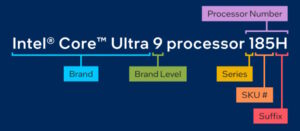
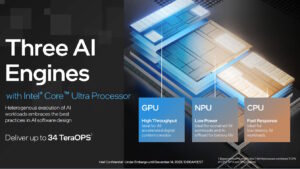
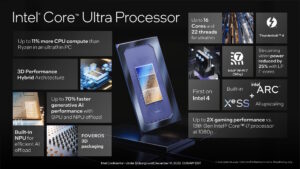



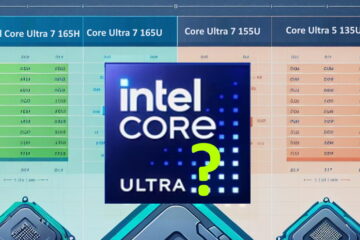

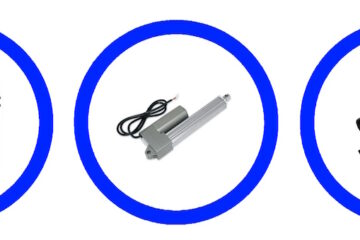
0 Comments